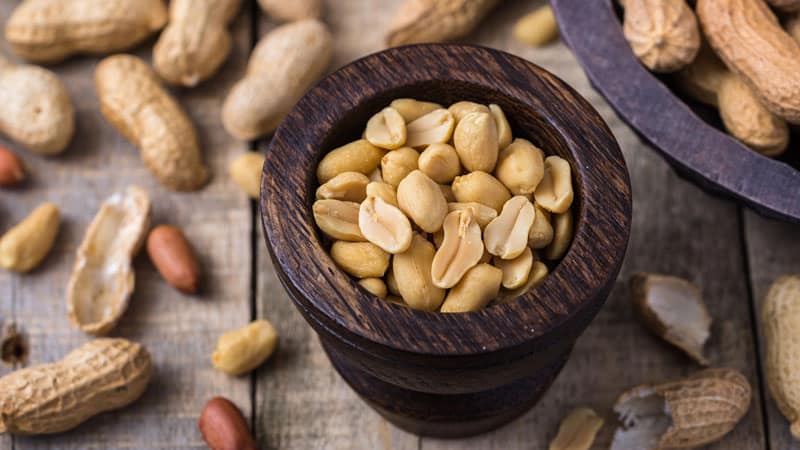
Peanuts are the most popular nuts in the US and around the world. They are often eaten as snacks or added to main dishes and desserts. And the uses of peanut butter can only be limited by one’s imagination! The irony is that peanuts aren’t actually nuts, they are legumes, related to peas and beans. However, due to their high fat content, they are usually categorized as nuts.
Since they are way fattier than other legumes, and much closer to nuts, the same recommendation of not exceeding 1/4 cup of nuts a day or 2 tablespoons of nut butter applies. Something to keep in mind is that peanuts are highly nutritious compared to most legumes and nuts! Unlike nuts, raw peanuts are rich in folate. But unlike legumes, peanuts don’t offer omega-3 fatty acids.
Overall, peanuts can give us a nice boost of protein, fiber, omega-6 fatty acids, vitamins B1 or thiamine, B3 or niacin, B5 or pantothenic acid, B9 or folate, and vitamin E. They are also very rich in copper, magnesium, manganese, phosphorus, and zinc. This means that they are great for our heart, our muscles, our bones, our brain, our immunity, our metabolism, and our children’s early development.
Peanut Allergy
Sadly, peanut allergy is one of the most common food allergies in the US, where nearly 2.5% of children suffer from it. If you suspect that you or your children are allergic to peanuts, be sure to reach out to an allergist. Once the allergy is confirmed, you will have to pay special attention to food labels and overall food ingredients to avoid risk of exposure. The good news is that since peanuts are not nuts, you could be allergic to peanuts and not to nuts, though you should still check with a specialist before eating nuts or feeding them to your kids. Sunflower seeds are also a great alternative for most people with peanut and/or nut allergies. Always consult your doctor if you have any doubts or concerns.
Nutrition Calculator: Peanuts
Use our personalized nutrition calculator to discover the percentage of daily nutrition needs you and your family can get from eating peanuts.
Nutrition needs vary according to age, sex, and whether women of reproductive age are pregnant or breastfeeding. Fill out the form below for yourself and for your family members to get personalized results.*
* Calculated as a percentage of the Recommended Daily Allowances (RDAs) as established by the U.S. Department of Agriculture and the U.S. Department of Health and Human Services. Based on nutritional information provided by the U.S. Department of Agriculture as an average of multiple peanut samples in different forms.
References
